Les Bons Sentiments
04 Sep - 10 Nov 2017
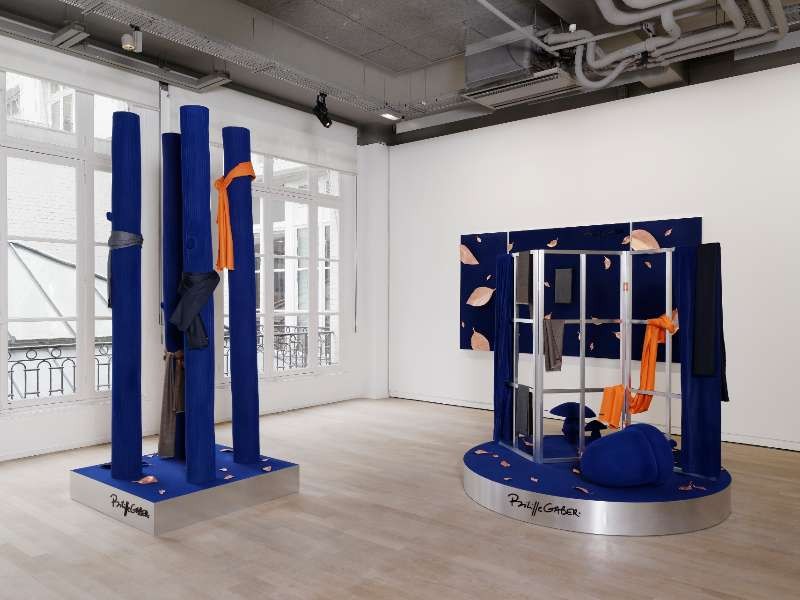
Exhibition view «Les Bons Sentiments», 19th Fondation d'entreprise Ricard Prize.
Proposal for Philippe Gaber, by Deborah Bowmann.
Photography : Aurélien Mole / Fondation d'entreprise Ricard
Proposal for Philippe Gaber, by Deborah Bowmann.
Photography : Aurélien Mole / Fondation d'entreprise Ricard
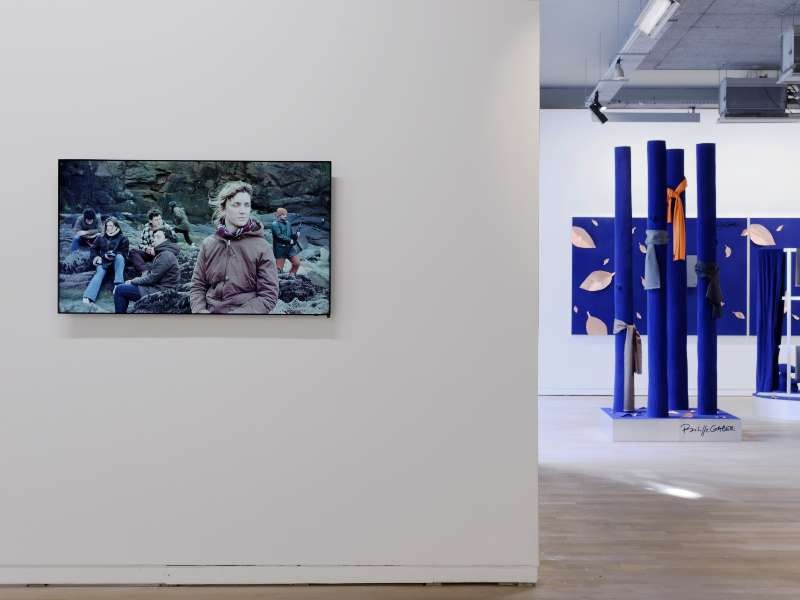
Exhibition view «Les Bons Sentiments», 19th Fondation d'entreprise Ricard Prize.
Photography : Aurélien Mole / Fondation d'entreprise Ricard
Photography : Aurélien Mole / Fondation d'entreprise Ricard
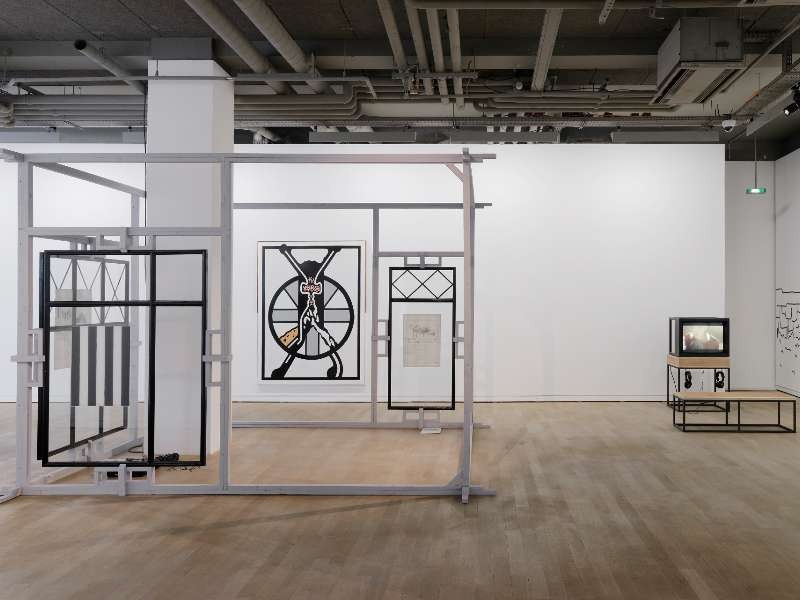
Exhibition view «Les Bons Sentiments», 19th Fondation d'entreprise Ricard Prize. Photography : Aurélien Mole / Fondation d'entreprise Ricard
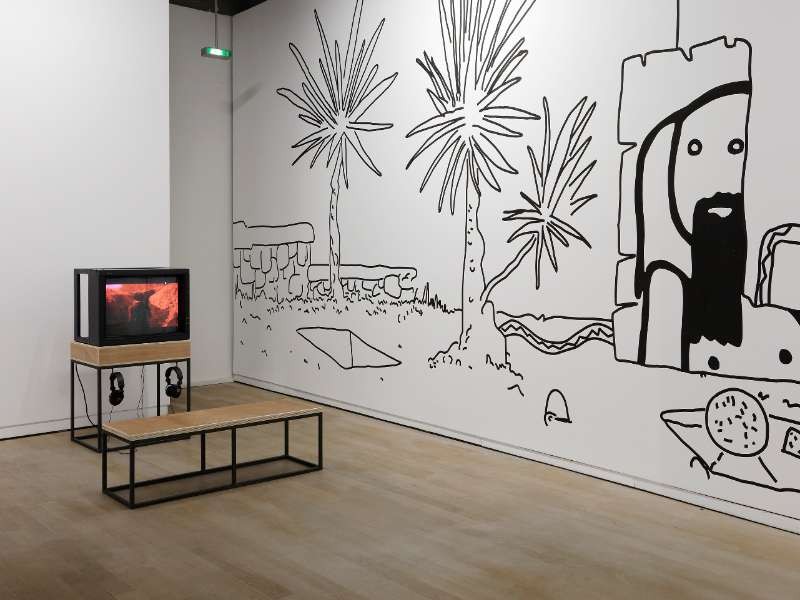
Exhibition view «Les Bons Sentiments», 19th Fondation d'entreprise Ricard Prize. Photography : Aurélien Mole / Fondation d'entreprise Ricard
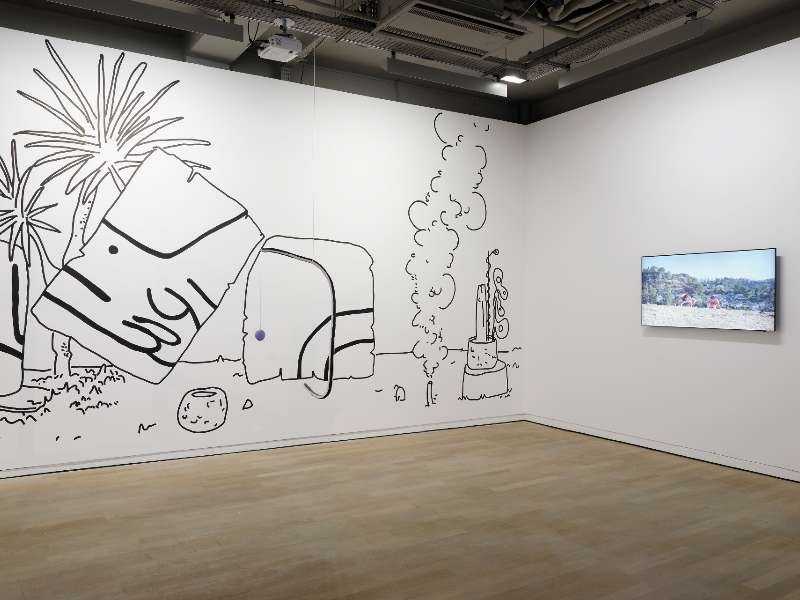
Exhibition view «Les Bons Sentiments», 19th Fondation d'entreprise Ricard Prize. Photography : Aurélien Mole / Fondation d'entreprise Ricard
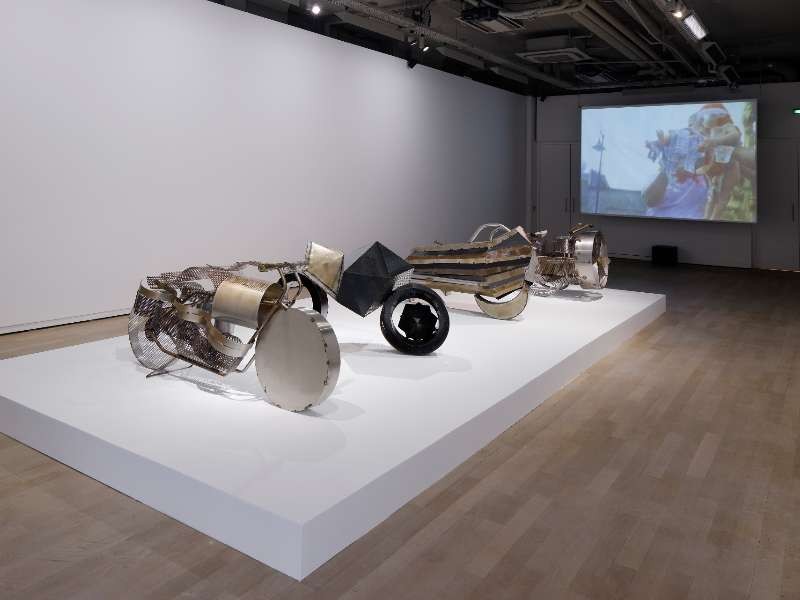
Exhibition view «Les Bons Sentiments», 19th Fondation d'entreprise Ricard Prize. Photography : Aurélien Mole / Fondation d'entreprise Ricard
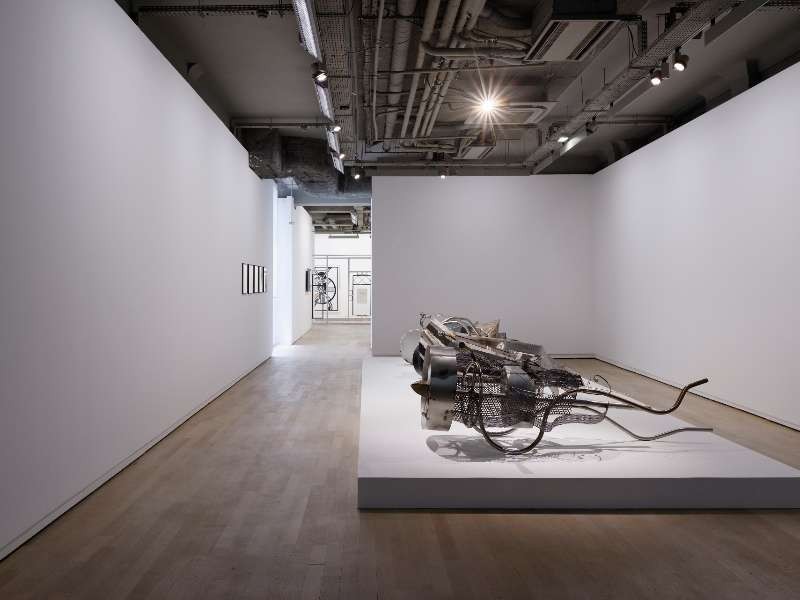
Exhibition view «Les Bons Sentiments», 19th Fondation d'entreprise Ricard Prize. Photography : Aurélien Mole / Fondation d'entreprise Ricard
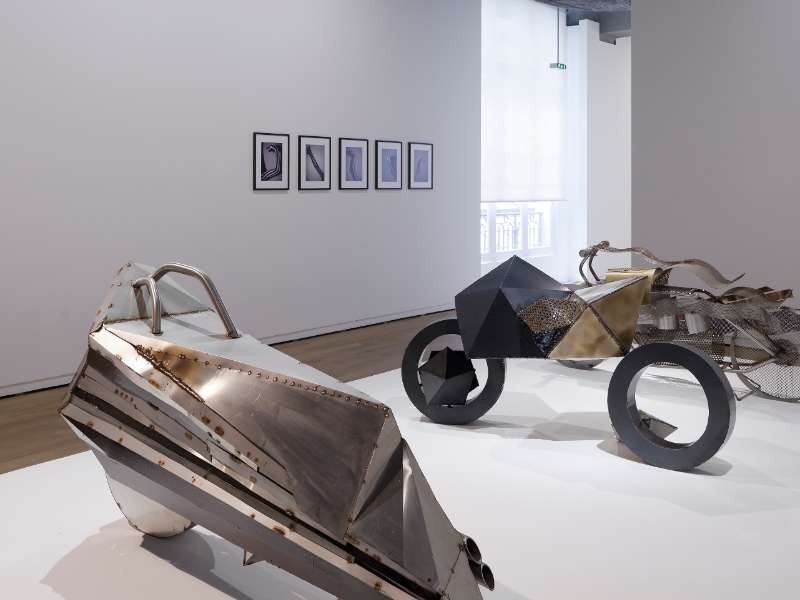
Exhibition view «Les Bons Sentiments», 19th Fondation d'entreprise Ricard Prize. Photography : Aurélien Mole / Fondation d'entreprise Ricard
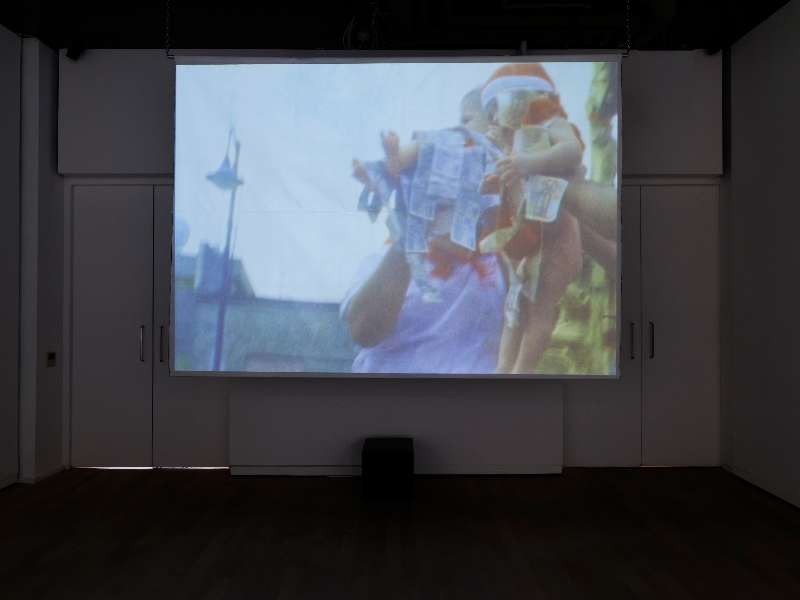
Exhibition view «Les Bons Sentiments», 19th Fondation d'entreprise Ricard Prize.
Photography : Aurélien Mole / Fondation d'entreprise Ricard
Photography : Aurélien Mole / Fondation d'entreprise Ricard
LES BONS SENTIMENTS
19th Fondation d'entreprise Ricard Prize
Artists: Deborah Bowmann, Pauline Curnier Jardin, Lola Gonzàlez, Thomas Jeppe, Caroline Mesquita and Zin Taylor
4 September - 10 November 2017
Curated by Anne-Claire Schmitz
On the occasion of the 19th Fondation d’entreprise Ricard Prize, the exhibition Les Bons Sentiments brings together the six nominated artists: Deborah Bowmann, Pauline Curnier Jardin, Lola Gonzàlez, Thomas Jeppe, Caroline Mesquita and Zin Taylor.
For this temporary cohabitation, each of them has been invited to show a set of works that generously displays the commitments and distinctive characteristics that make up their work.
It started with an intuition: to let oneself be more or less consciously guided by the power of attraction exerted by certain artistic practices, which all deploy a unique combination of materials, ideas and processes. Instead of following one clear esthetic or discursive line, the resulting exhibition aims to give off a scent and impress an attitude, tone and feeling upon visitors.
Today, the French expression “Les Bons Sentiments” usually implies ambivalent ulterior motives. Its less literal interpretation has supplanted the original one: “finer” feelings are rarely all that fine. This to-and-fro between a sincere intention and its immediately critical or cynical reception is revealing. Our relationship to benevolence seems to be governed by mistrust, to the point that this has become automatic.
In this era famous for “post-truth” and alternative facts, it could seem a bit risky, awkward or even political to want to confront the place of fineness, truth and honesty in our society. Yet these issues of a moral nature are increasingly debated and even stirred up by works of contemporary art.
Without lapsing into naivety or abandoning their sharpened perspective, many artists prefer to express their relationship to the world in a way that is candid, free of hang-ups, and dares to celebrate. Such a position voluntarily relinquishes criticism from a distance, in favor of other types of relationship that are certainly often less clear-cut, but do not hesitate to merge with the desired and analyzed object. Anne-Claire Schmitz, July 2017
The 19th Fondation d'entreprise Ricard Prize
Every year a different curator is invited to organize an exhibition at the Foundation that presents a new group of artists under 40. The prize is then awarded to one of the artists, by a jury composed of art collectors, museum directors and the curators of the previous Ricard prize editions. With the award comes the purchase of a work that is donated to the Centre Pompidou to join its permanent collection. The Fondation d’entreprise Ricard additionally supports the realization of a project by the prize-winner abroad.
ABOUT THE ARTISTS
After blatant amateurism, is there now a trend towards stylized, meticulous professionalism? For four years, Amaury Daurel and Victor Delestre have been constituting the entity Deborah Bowmann. Alongside their respective practices, they have opted for a production and circulation dynamic that is more like that of an agency than that of a traditional artist-duo. In their ultra-idiosyncratic, immersive works, every element acquires the potential to be a medium, every detail becomes an opportunity for critical work. Sculptures, studio, friends, objects, computer, clothing, lecture, shop, press release, lighting, website, drinks, artists, invitations... make up the plastic and conceptual material of the Deborah Bowmann project. The gallery of the same name, which they have been running for three years in Brussels, is part of this approach, extending it as well. Beyond its performative status, their exhibition space offers a high quality program, and is shaping up to be one of the Belgian capital’s must-see art spaces. Not even remotely cynical, Deborah Bowmann’s packaged imagery really raises the question of communication—that is to say the art of establishing more or less direct contact with someone or something. Collaboration, the nature of the relationship (from the intimate to the spectacular), work ethics, presentation or representation... are key values conveyed by a project that relentlessly questions contemporary art’s modi operandi. For the Ricard Prize exhibition, Deborah Bowmann presents a system which connects several sculptures that serve as exhibition stands for the collections of independent fashion designer Philippe Gaber, who specializes in scarves.
Since her beginnings in art school, Pauline Curnier Jardin has always been producing her visual work in close connection with cinema and the performing arts. Beyond her passions and influences, the artist has been developing unique writing that is highly independent and particularly full of life. Her work, which she gladly leaves open to every kind of external contamination or interference, combines and blurs genres: in it, history is anecdotal, feminism is practiced, everyday life is spectacular, religion is animistic, sentimentality is extreme, criticism is joyous and playful, trivial is acclaimed, benevolence is unbridled, pain is enticing... Each of the artist’s works is a call to experience, promising a cathartic, salutary conclusion to anyone who wants it. From moderation to immoderation, Pauline Curnier Jardin’s films, performances and installations create spaces of truth where there is no hierarchy between official, personal and universal history. The approaches and methods that define the production of each film are numerous. Nevertheless, the artist is particularly interested in capturing performed and documented forms of live events. This results in a unique energy characteristic of the “performing arts”—in which one must give one’s best within a limited timeframe—and of its capture, the attempt to record a present moment that one does not dare allow to slip away. Made of an accumulation of rushes, Explosion Ma Baby builds a suspended, ecstatic time. The theme of the film is the artist’s yearly visit to a village square. Over time, the event she records there has gradually turned into an act of devotion, to the point of becoming an important ritual in her private history. The film Blutbad Parade presents a strange flirtation between war and performance. It tells of a wartime event that took place in Karlsruhe in 1916, when French planes bombed a circus in the middle of a performance.
Lola Gonzàlez’s videos impose a slowness, a silence, a heaviness. Yet everything points to understanding them as the result of spontaneous, hyperactive work processes stimulated by states of emergency, by accumulated desires and feelings. The time at play in her work is that of the present: it celebrates a space, a community, an era. Its materialization is such that every form of past or future seems to be reduced to the feeling that something is missing. Lola Gonzàlez displays rigor and commitment—a commitment that, beyond clichés, dares to express itself through sentimentality, emotion and humanity. Bodies have an insistent way of inhabiting the space framed by her films, generating a sensation of excess that is fascinating and unsettling in equal measure. We are not accustomed to such a sincere tone that effortlessly oscillates between hyper-naturalism and orchestrated mannerism. Presented like a series of paintings, the artist’s films assert their pictorial character: everything reveals a controlled esthetic that freezes landscapes and treats the body as a set of fluid forces.
The surrounding beauty is that of an augmented reality that blurs the path to its origins. Change is in progress, at work, but we no longer really know if it is the result of an out-of-control cosmos or simply a blurred perception. From the Breton coast to the American west, the artist activates energies, awakens territories and leads us, with complicity, into an experience of worlds that are strangely perceptible, audible and palpable.
Behind an apparent complexity, Thomas Jeppe’s work quite simply expresses his pleasure: that of discovering the ins and outs of cultural production, which codify and link our society through eras, territories and systems. It is quite logical that the artist turned an invitation from an exhibition in Paris into an opportunity to plunge into a both random and extremely precise reading of voice stories, embodied by a selection of Parisian personalities of yesterday and today. The constellation presented by the artist works like an allegorical meeting between the castrato figure, the DJ and techno composer Philippe Hallais, the researcher and opera singer Manuel Garcia, and the mathematician, philosopher and committed night owl Gilles Châtelet. From impotence to explosion, Thomas Jeppe sketches the contours of a community that has never been assembled. Stimulated by intuition and supported by research, the artist jubilantly combines the style of underground culture with peculiarities from history. From networks to free electrons, he examines the relations between the effect of a dominant image and the specific position of a detail. He carefully reveals these relations, reuses them in installations and paintings, and also disseminates them in his interviews, publications and curatorial projects. For Thomas Jeppe, it is a question of editorial practice and attitude: rearranging content and ideas, to shift contexts and customs towards alternative interpretations.
The series of motorcycles presented in the exhibition confirms Caroline Mesquita’s ability to produce objects that combine sculptural autonomy with high narrative potential. The artist’s interest in kinetic energy is palpable, so much can one sense her attraction to movement, displacement and the potential to escape space and time. Her bikes, with their resolutely retro futurist esthetic, are the result of work sessions in which mechanical mastery transformed into pleasure and made sculptural experimentation possible. The manipulation of materials is central to Caroline Mesquita’s practice: she succeeds in subtly combining strong production imagery with a carnal relation to metals like steel. These creations often look like skins or carcasses that are distanced from, but also intrinsically linked to, the bodies that produce and view them. But far from being rigid, these sculptures reveal a lively process in which fire is an element of contamination and transformation. They bear the signs of a technique the artist developed to stabilize the metal’s heating colors, posting on the sculptures themselves the secretions, bleedings and transpirations that their “molting” generates. By renewing our perception of motorcycles—sometimes a popular sign of normality, sometimes a sign of marginality—Caroline Mesquita gives rise to grotesque and elegant forms that assert underlying identities.
Zin Taylor develops fully fledged languages consisting of alphabets of forms and spaces that both lightly and insistently question the wanderings and stimuli of creative thought. We see this in the work The Story of Stripes and Dots, of which he has already written seven chapters. In this “story”, the protagonists, which are none other than lines and dots, examine the wide potential of their binary status. The series offers a humorous and analytical interpretation of the history of abstract and conceptual art, while also taking on a more existential narrative facet. The artist has recently been creating large mural drawings that sketch lounge-like landscapes full of diluted architectures and elastic characters. Thus he pursues his exploration of language through visual forms: everything is a subject, everything is a narrative element, everything is a pretext to liberate language. Under cover of a generic esthetic mixing lines, dots, black and white, Zin Taylor’s art universe is talkative, organic and specific. The artist enters and excavates empty space to get a better look at the ways in which things appear, connect and circulate. His way of operating can be perceived as a conscious distortion of creative writing, while his mediums freely vary, from sculpture to drawing, from text to sound, from images to objects, from units to sets.
19th Fondation d'entreprise Ricard Prize
Artists: Deborah Bowmann, Pauline Curnier Jardin, Lola Gonzàlez, Thomas Jeppe, Caroline Mesquita and Zin Taylor
4 September - 10 November 2017
Curated by Anne-Claire Schmitz
On the occasion of the 19th Fondation d’entreprise Ricard Prize, the exhibition Les Bons Sentiments brings together the six nominated artists: Deborah Bowmann, Pauline Curnier Jardin, Lola Gonzàlez, Thomas Jeppe, Caroline Mesquita and Zin Taylor.
For this temporary cohabitation, each of them has been invited to show a set of works that generously displays the commitments and distinctive characteristics that make up their work.
It started with an intuition: to let oneself be more or less consciously guided by the power of attraction exerted by certain artistic practices, which all deploy a unique combination of materials, ideas and processes. Instead of following one clear esthetic or discursive line, the resulting exhibition aims to give off a scent and impress an attitude, tone and feeling upon visitors.
Today, the French expression “Les Bons Sentiments” usually implies ambivalent ulterior motives. Its less literal interpretation has supplanted the original one: “finer” feelings are rarely all that fine. This to-and-fro between a sincere intention and its immediately critical or cynical reception is revealing. Our relationship to benevolence seems to be governed by mistrust, to the point that this has become automatic.
In this era famous for “post-truth” and alternative facts, it could seem a bit risky, awkward or even political to want to confront the place of fineness, truth and honesty in our society. Yet these issues of a moral nature are increasingly debated and even stirred up by works of contemporary art.
Without lapsing into naivety or abandoning their sharpened perspective, many artists prefer to express their relationship to the world in a way that is candid, free of hang-ups, and dares to celebrate. Such a position voluntarily relinquishes criticism from a distance, in favor of other types of relationship that are certainly often less clear-cut, but do not hesitate to merge with the desired and analyzed object. Anne-Claire Schmitz, July 2017
The 19th Fondation d'entreprise Ricard Prize
Every year a different curator is invited to organize an exhibition at the Foundation that presents a new group of artists under 40. The prize is then awarded to one of the artists, by a jury composed of art collectors, museum directors and the curators of the previous Ricard prize editions. With the award comes the purchase of a work that is donated to the Centre Pompidou to join its permanent collection. The Fondation d’entreprise Ricard additionally supports the realization of a project by the prize-winner abroad.
ABOUT THE ARTISTS
After blatant amateurism, is there now a trend towards stylized, meticulous professionalism? For four years, Amaury Daurel and Victor Delestre have been constituting the entity Deborah Bowmann. Alongside their respective practices, they have opted for a production and circulation dynamic that is more like that of an agency than that of a traditional artist-duo. In their ultra-idiosyncratic, immersive works, every element acquires the potential to be a medium, every detail becomes an opportunity for critical work. Sculptures, studio, friends, objects, computer, clothing, lecture, shop, press release, lighting, website, drinks, artists, invitations... make up the plastic and conceptual material of the Deborah Bowmann project. The gallery of the same name, which they have been running for three years in Brussels, is part of this approach, extending it as well. Beyond its performative status, their exhibition space offers a high quality program, and is shaping up to be one of the Belgian capital’s must-see art spaces. Not even remotely cynical, Deborah Bowmann’s packaged imagery really raises the question of communication—that is to say the art of establishing more or less direct contact with someone or something. Collaboration, the nature of the relationship (from the intimate to the spectacular), work ethics, presentation or representation... are key values conveyed by a project that relentlessly questions contemporary art’s modi operandi. For the Ricard Prize exhibition, Deborah Bowmann presents a system which connects several sculptures that serve as exhibition stands for the collections of independent fashion designer Philippe Gaber, who specializes in scarves.
Since her beginnings in art school, Pauline Curnier Jardin has always been producing her visual work in close connection with cinema and the performing arts. Beyond her passions and influences, the artist has been developing unique writing that is highly independent and particularly full of life. Her work, which she gladly leaves open to every kind of external contamination or interference, combines and blurs genres: in it, history is anecdotal, feminism is practiced, everyday life is spectacular, religion is animistic, sentimentality is extreme, criticism is joyous and playful, trivial is acclaimed, benevolence is unbridled, pain is enticing... Each of the artist’s works is a call to experience, promising a cathartic, salutary conclusion to anyone who wants it. From moderation to immoderation, Pauline Curnier Jardin’s films, performances and installations create spaces of truth where there is no hierarchy between official, personal and universal history. The approaches and methods that define the production of each film are numerous. Nevertheless, the artist is particularly interested in capturing performed and documented forms of live events. This results in a unique energy characteristic of the “performing arts”—in which one must give one’s best within a limited timeframe—and of its capture, the attempt to record a present moment that one does not dare allow to slip away. Made of an accumulation of rushes, Explosion Ma Baby builds a suspended, ecstatic time. The theme of the film is the artist’s yearly visit to a village square. Over time, the event she records there has gradually turned into an act of devotion, to the point of becoming an important ritual in her private history. The film Blutbad Parade presents a strange flirtation between war and performance. It tells of a wartime event that took place in Karlsruhe in 1916, when French planes bombed a circus in the middle of a performance.
Lola Gonzàlez’s videos impose a slowness, a silence, a heaviness. Yet everything points to understanding them as the result of spontaneous, hyperactive work processes stimulated by states of emergency, by accumulated desires and feelings. The time at play in her work is that of the present: it celebrates a space, a community, an era. Its materialization is such that every form of past or future seems to be reduced to the feeling that something is missing. Lola Gonzàlez displays rigor and commitment—a commitment that, beyond clichés, dares to express itself through sentimentality, emotion and humanity. Bodies have an insistent way of inhabiting the space framed by her films, generating a sensation of excess that is fascinating and unsettling in equal measure. We are not accustomed to such a sincere tone that effortlessly oscillates between hyper-naturalism and orchestrated mannerism. Presented like a series of paintings, the artist’s films assert their pictorial character: everything reveals a controlled esthetic that freezes landscapes and treats the body as a set of fluid forces.
The surrounding beauty is that of an augmented reality that blurs the path to its origins. Change is in progress, at work, but we no longer really know if it is the result of an out-of-control cosmos or simply a blurred perception. From the Breton coast to the American west, the artist activates energies, awakens territories and leads us, with complicity, into an experience of worlds that are strangely perceptible, audible and palpable.
Behind an apparent complexity, Thomas Jeppe’s work quite simply expresses his pleasure: that of discovering the ins and outs of cultural production, which codify and link our society through eras, territories and systems. It is quite logical that the artist turned an invitation from an exhibition in Paris into an opportunity to plunge into a both random and extremely precise reading of voice stories, embodied by a selection of Parisian personalities of yesterday and today. The constellation presented by the artist works like an allegorical meeting between the castrato figure, the DJ and techno composer Philippe Hallais, the researcher and opera singer Manuel Garcia, and the mathematician, philosopher and committed night owl Gilles Châtelet. From impotence to explosion, Thomas Jeppe sketches the contours of a community that has never been assembled. Stimulated by intuition and supported by research, the artist jubilantly combines the style of underground culture with peculiarities from history. From networks to free electrons, he examines the relations between the effect of a dominant image and the specific position of a detail. He carefully reveals these relations, reuses them in installations and paintings, and also disseminates them in his interviews, publications and curatorial projects. For Thomas Jeppe, it is a question of editorial practice and attitude: rearranging content and ideas, to shift contexts and customs towards alternative interpretations.
The series of motorcycles presented in the exhibition confirms Caroline Mesquita’s ability to produce objects that combine sculptural autonomy with high narrative potential. The artist’s interest in kinetic energy is palpable, so much can one sense her attraction to movement, displacement and the potential to escape space and time. Her bikes, with their resolutely retro futurist esthetic, are the result of work sessions in which mechanical mastery transformed into pleasure and made sculptural experimentation possible. The manipulation of materials is central to Caroline Mesquita’s practice: she succeeds in subtly combining strong production imagery with a carnal relation to metals like steel. These creations often look like skins or carcasses that are distanced from, but also intrinsically linked to, the bodies that produce and view them. But far from being rigid, these sculptures reveal a lively process in which fire is an element of contamination and transformation. They bear the signs of a technique the artist developed to stabilize the metal’s heating colors, posting on the sculptures themselves the secretions, bleedings and transpirations that their “molting” generates. By renewing our perception of motorcycles—sometimes a popular sign of normality, sometimes a sign of marginality—Caroline Mesquita gives rise to grotesque and elegant forms that assert underlying identities.
Zin Taylor develops fully fledged languages consisting of alphabets of forms and spaces that both lightly and insistently question the wanderings and stimuli of creative thought. We see this in the work The Story of Stripes and Dots, of which he has already written seven chapters. In this “story”, the protagonists, which are none other than lines and dots, examine the wide potential of their binary status. The series offers a humorous and analytical interpretation of the history of abstract and conceptual art, while also taking on a more existential narrative facet. The artist has recently been creating large mural drawings that sketch lounge-like landscapes full of diluted architectures and elastic characters. Thus he pursues his exploration of language through visual forms: everything is a subject, everything is a narrative element, everything is a pretext to liberate language. Under cover of a generic esthetic mixing lines, dots, black and white, Zin Taylor’s art universe is talkative, organic and specific. The artist enters and excavates empty space to get a better look at the ways in which things appear, connect and circulate. His way of operating can be perceived as a conscious distortion of creative writing, while his mediums freely vary, from sculpture to drawing, from text to sound, from images to objects, from units to sets.
